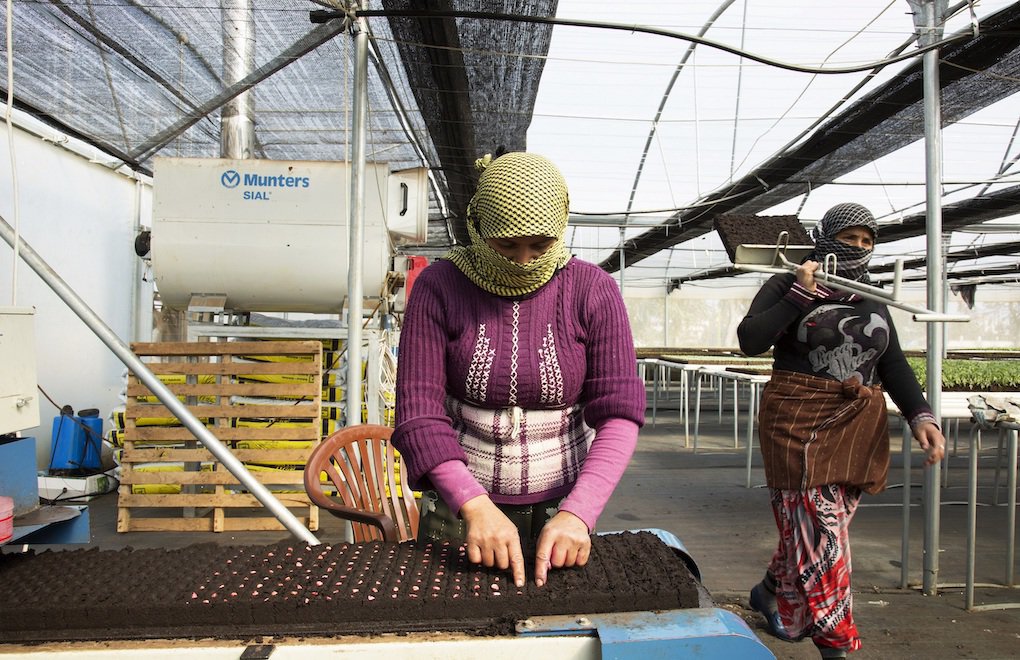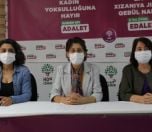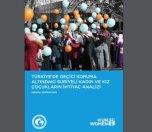Click to read the article in Turkish
International non-governmental organization Building Markets has released its report "Women as Entrepreneurs and Employees in Syrian Small and Medium Sized Enterprises (SMEs) in Turkey," addressing the situation of women entrepreneurs and employees in Turkey.
Indicating that there has been significant progress in increasing gender parity in the workforce throughout the world in the last decade, the report has also shared World Bank data within this context.
Accordingly, in 131 economies, there have been almost 300 reforms to laws and regulations that have supported women's participation in the workforce. Yet, globally, it is estimated that over 2.7 billion women are legally restricted from having the same job opportunities as men.
It is estimated that improving women's labor force participation could increase GDP by 6 trillion US dollars. According to the report, women also tend to be better spenders and savers, reinvesting up to 90 percent of income into their families compared to just 35 percent by men.
Syrians brought a capital of 300 million dollars
The report has also shared information about the hardships suffered by refugee women, with a specific focus of Syrians' place in work life in Turkey.
According to the figures shared in the organization's report, as of 2017, 6,033 registered workplaces were opened by Syrians, which brought a capital of 300 million dollars into the country.
"The great majority of Syrians in Turkey are living in urban areas and not refugee camps," the report has noted and shared the below information:
"Since 2016, the government began offering work permits to those registered under Temporary Protection, although the number of actual permits issued by 2019 has remained relatively low, at just 31,000.
"Turkey has a large informal economy, approximately 35 percent of the total market. It is estimated that there is a significant number of Syrians working informally, which increases the likelihood of abuse, including low wages, dangerous working environments, discrimination, and lack of benefits. The majority of Syrian workers in Turkey, both informally and formally, are men."
Women's participation was also low before
"Prior to the onset of the civil war in 2011, female participation in the Syrian workforce was low and women were generally not involved in work outside of the home," the report has highlighted further:
"According to the 2009 Syrian National Report for Entrepreneurship, female participation was just 4.4 percent. This is four to eight times lower than the female share of the labor force in host communities, such as Turkey (33 percent), Jordan (18.1 percent), and Lebanon (24.5 percent).13 For comparison, in 2019, this number was 39 percent globally.
"Furthermore, in 2010, the ratio of female to male labor force participation worldwide was 65.9 percent. vs 48 percent in Turkey in 2019 and 21 percent in Syria in 2011. This imbalance can be partly attributed to divergent cultural expectations between genders, household roles and responsibilities of Syrian women along with power dynamics that can arise between genders in the Syrian business community."
Lack of education isolates women from work life
Against this backdrop, the report has also referred to a recent report by the United Nations (UN), which has shown that women are getting isolated from work life for a variety of reasons. The report has shared the following findings and observations within this context:
"According to the UN Women's Needs Assessment of Syrian Women and Girls under Temporary Protection Status, Syrian women and girls in Turkey face barriers to meet their basic needs, recover from war traumas, and participate in Turkey's social and economic life.
"Seventy percent of Syrian women do not speak any Turkish, making it difficult for them to exercise their rights and reach services. As a result, they may turn to negative coping mechanisms: unregistered work, child labor, and early and forced marriages.
"Based on the UN Women surveying, only 15 percent of Syrian refugee women in Turkey work in income-generating jobs (mainly in agriculture, textiles and service provision). Only 7 percent have access to basic skills and vocational education training.
"The most popular areas of work are hairdressing (30 percent) and needlework (27 percent), which are closely related to traditional gender roles and provide limited opportunity for formal employment.
"Unfortunately, women state that they are not attending training or educational courses because of childcare obligations and because they lack information about opportunities – two problems that are easy to address.
Only 14 percent of all employees are women
"Of the 2,022 SMEs in the Building Markets network, 1,606 shared data on the gender of their employees. 501 SMEs reported hiring at least one full-time female employee. However, the prevalence of female employees is low, representing less than 14 percent of all employees in the survey sample.
"Female employment is most common in the 'Arts, entertainment and recreation', 'Education', and 'Human health and social work' sectors.
Major problems of Syrian women entrepreneurs
"Most SMEs with female owners (70 percent) report having a business plan for the next 12 months. Additionally, 85 percent have a business bank account. In both aspects, women-owned businesses fare better than male-owned ones in the sample.
"Only 14 percent of female-owned SMEs list access to finance as a 'large' or 'extreme' constraint to their business. However, thirty-seven percent are interested in taking out a business loan.
"Reasons reported for needing a loan ranged from geographic expansion to updating or repairing business equipment. When asked their first and second greatest challenges for the next six months, SMEs with female owners had varied responses, but difficulties accessing finance and issues with currencies were cited most frequently. (TP/SD)








